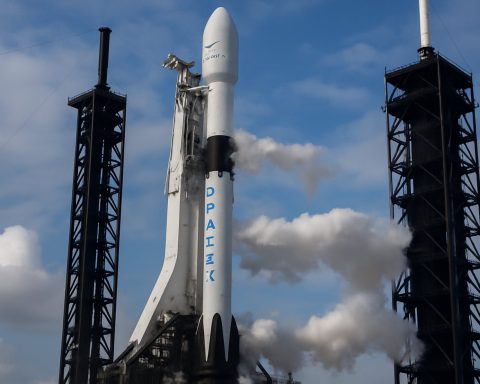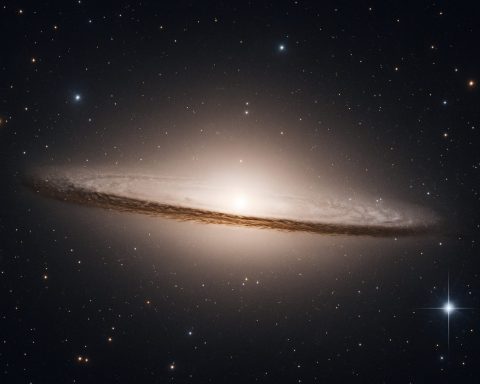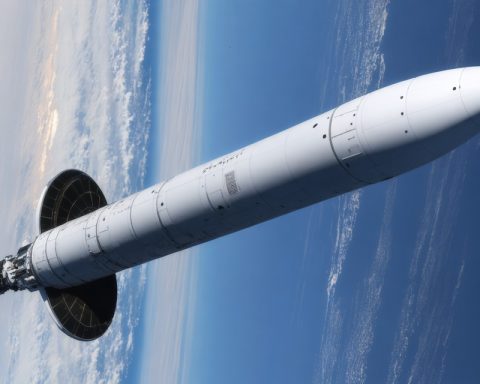- K2-18b, a distant exoplanet located 124 light-years away in Leo, has a hydrogen-rich atmosphere and exists within its star’s habitable zone, raising the possibility of life.
- Astronomers utilizing the James Webb Space Telescope (JWST) have detected gases dimethyl sulfide (DMS) and dimethyl disulfide (DMDS) in K2-18b’s atmosphere, both associated with life on Earth.
- The presence of these molecules hints at a Hycean world, potentially hosting vast oceans and microbial life beneath an alien sky.
- While the discovery is statistically significant, it has not yet reached the certainty threshold, necessitating further JWST observations.
- The findings provoke consideration of life’s potential ubiquity in the cosmos, suggesting that extraterrestrial life may exist beyond Earth.
The cosmos has whispered a tantalizing secret, tucked away in the atmospheric swirls of the distant exoplanet K2-18b. It’s a secret so curious and promising that it could illuminate one of humanity’s most profound questions: Are we alone in the universe?
Perched 124 light-years away in the constellation of Leo, K2-18b is not your ordinary distant world. It sits enveloped in a hydrogen-rich atmosphere and floats within its star’s habitable zone—a serendipitous dance of cosmic conditions that might harbor life. Recent strides made by astronomers, using the cutting-edge gaze of the James Webb Space Telescope (JWST), have added a new and fascinating layer to this story: the detection of gases dimethyl sulfide (DMS) and dimethyl disulfide (DMDS). These are no ordinary molecules; on Earth, they bear the signature of life itself.
These findings spawn an image of a Hycean paradise: a world awash with vast oceans, teeming with microbial life beneath a canopy of thick, alien clouds. If true, K2-18b would defy its classification as simply an “exoplanet” and instead become a galactic beacon hinting at life beyond our solar shores.
Yet, the journey to this revelation was neither straightforward nor lacking in scientific rigor. Initially suspected through the prism of near-infrared frequencies, the presence of these molecules was detected using JWST’s MIRI (Mid-Infrared Instrument). The distinct chemical footprints of DMS and DMDS traced through the planet’s atmosphere tell a story that seems both improbable and wondrous. The mysterious absorption patterns in starlight, interpreted by astronomers as the planet transit its star, lead back to this intriguing proposition: life as we know it—or perhaps as we’ve yet to imagine—might exist these cosmic waters.
These results, reaching a ‘three-sigma’ statistical significance, are tantalizing but not definitive. They suggest a mere 0.3% chance of being a cosmic coincidence, yet fall short of the ‘five-sigma’ threshold scientists hold as the golden ratio of certainty. Additional observations with JWST could refine these probabilities, edging cosmology closer to a breathtaking moment of clarity.
While caution tempers excitement, the broader picture painted by this discovery evokes a timeless hope: amid the infinite night of space, life is not unique to the blue marble of Earth. It might flicker on distant Hycean worlds, beckoning us with whispers of common cosmic ancestry.
At its heart, the story of K2-18b is one of exploration and wonder, reminding us that the universe is ripe with potential discoveries. Here, the search for extraterrestrial life steps closer to science than fiction, urging us to listen more closely to the stars and ponder their silent musings.
Exoplanet Discovery: Could K2-18b Harbor Life?
Understanding the Potential of K2-18b
K2-18b’s recent spotlight in the field of astronomy has sparked significant interest due to the detection of dimethyl sulfide (DMS) and dimethyl disulfide (DMDS) in its atmosphere. These compounds, typically produced by biological processes on Earth, present a captivating possibility: the existence of life beyond our planet. But what exactly does this mean for our understanding of the universe?
Unlocking the Secrets of K2-18b
1. How-To Analyze Exoplanet Atmospheres
The James Webb Space Telescope (JWST) uses sophisticated instruments to study exoplanetary atmospheres. Here’s a simplified breakdown of the process:
– Transit Spectroscopy: This technique involves observing the starlight that passes through an exoplanet’s atmosphere during its transit. The light’s absorption spectrum can reveal the presence of certain gases.
– Harmonizing Data: The JWST’s MIRI instrument operates in the mid-infrared range to detect unique absorption patterns that indicate specific molecules.
– Statistical Analysis: Results reaching a ‘three-sigma’ significance suggest a high probability of these molecules’ presence but require further confirmation to reach five-sigma certainty.
2. Real-World Use Cases: How Astronomical Discoveries Benefit Life on Earth
Discoveries like K2-18b’s atmospheric composition have broader applications:
– Technological Advancements: Innovations in telescope technology often drive advancements in imaging and sensor technology, impacting everything from medical imaging to climate monitoring.
– Climate Science: Understanding the atmospheric compositions of distant planets aids climate models predicting Earth’s future atmospheric changes.
– Astrobiology: These findings feed into astrobiological studies, providing insights into potential biosignatures and influencing search strategies for extraterrestrial life.
3. Industry Trends: The Future of Space Exploration
The hunt for life on exoplanets like K2-18b is intensifying, leading to numerous industry trends:
– Increased Collaboration: International collaborations are intensifying with agencies like NASA, ESA, and private companies working together.
– Private Sector Involvement: Companies such as SpaceX and Blue Origin are paving the way for public-private partnerships in space exploration.
– Nano-Satellite Exploration: The miniaturization of technology allows for the deployment of cost-effective, smaller telescopes and exploration tools.
4. Pros and Cons Overview
Pros:
– Potential for Discovering Life: The presence of life-signature molecules raises the possibility of discovering extraterrestrial life.
– Advancement of Science: Drives technological innovations and collaborative projects.
Cons:
– Uncertainty: Results are not yet definitive, needing further verification before concrete conclusions can be drawn.
– Resource Allocation: Expensive investments with no guaranteed outcomes.
Addressing Reader Questions
– Can K2-18b support human life?
Although K2-18b is intriguing due to its potentially life-supporting atmosphere, its vastly different environment likely doesn’t support human life as Earth does.
– What makes DMS and DMDS significant?
These molecules are associated with biological production on Earth, making them key players in the search for extraterrestrial life.
– How soon can we confirm these findings?
Further observations and analyses by the JWST and other telescopes are required, which could take several years.
Conclusions and Actionable Recommendations
1. Stay Informed: Follow updates from reputable sources such as NASA and ESA for new discoveries.
2. Explore Astronomy Resources: Engage with online courses or local astronomy clubs to deepen your understanding of exoplanets and their study.
3. Support Science Education: Advocate for science programs that empower the next generation of astronomers and scientists.
4. Promote STEM Careers: Encourage youth to consider careers in astronomy and related sciences to ensure continued discovery and exploration.
For further exploration of such groundbreaking topics, visit Nasa and ESA. These sites offer a wealth of information on space research and modern astronomical advancements.












